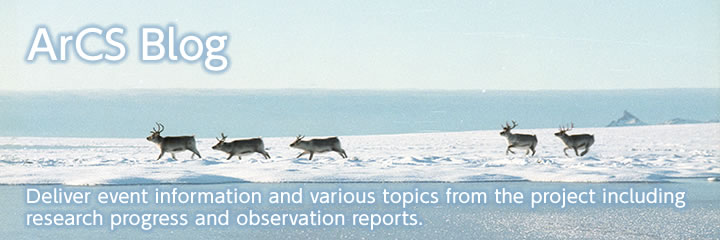The workshop on the “Dynamics and Mass Budget of Arctic Glaciers" was held from 23-25 January, 2017 in Bethel, Maine, USA. This workshop was organized by Network on Arctic Glaciology Annual Meeting (NAG), one of the research networks under International Arctic Science Committee (IASC). The purpose of the workshop was:

Arctic Monitoring and Assessment Programme (AMAP) 30th Working Group meeting was held between November 28 and December 1 in Helsinki, Finland. Eight Arctic States (Canada, Denmark, Finland, Iceland, Norway, Russia, Sweden, and US), three of six AC permanent participants (indigenous peoples’ organizations), six AC observer countries (China, France, Germany, Italy, Japan and Rep. Korea), and related organizations such as PAME, CAFF, EPPR, IASC, and WWF, participated in this meeting.
The second PAME Meeting was held on Sep.19-21 in Portland, Maine, USA.
The Danish territory of Greenland is attracting a lot of attention as a junction point where climate change and social change meet. For example, changes in climate, such as the rise in sea temperature and the melting of ice, are bringing numerous changes to the livelihood of people in Greenland, who live together with marine and land mammals and rely on fishing and hunting. At the same time climate change is also raising the possibility of the commercial exploitation of natural resources such as oil, natural gas and minerals, which is why more and more politicians in Greenland are calling for greater autonomy and even independence from Denmark. For these reasons Greenland is increasingly seen as an intersection of climate change and social change. Since such interplay of natural and social conditions may influence the entire planet, Greenland is attracting interest not only among researchers, but also among journalists and adventurers.
Oceanographic observation by R/V Mirai in the western Arctic Sea (MIRAI Arctic cruise 2016: Theme 6)
22 August to 5 October, oceanographic observations in the Arctic were conducted on the R/V Mirai.
The Expert Group on Black Carbon and Methane (EGBCM) held its third meeting in Washington DC, US on October 25-26, 2016. Karen Florini (United States) chaired the meeting. Participants included seven Arctic States (Canada, Finland, Iceland, Kingdom of Denmark, Norway, Sweden and the United States); one Permanent Participant organization (the Arctic Athabaskan Council); three Observer States (Italy, Japan, and Korea); the European Union; and two Arctic Council working groups (AMAP and ACAP).
Four ArCS scientists from Faculty of Fisheries Sciences at Hokkaido University are participating in MIRAI Arctic cruise 2016 from 22nd August to 5th October. Our research objective is to examine the influence of Anadyr water, the high-productive zone in the north Bering Sea, to marine ecosystem in the Pacific Arctic.
ArCS project’s 2016 1st Plenary Meeting was held at Miyoshi Memorial Auditorium, JAMSTEC Yokohama Institute for Earth Sciences on Thursday, 23rd June 2016, where were around 80 participants.
At the meeting, presentations were given on recent outcomes and activity plans of respective project menus and research themes. Further, there were three sessions focusing on the collaboration between the theme 7 “People and Community in the Arctic” and the other Themes of International Collaborative Researches.
We conducted meteorological and hydrographic surveys including marine biogeochemical samplings in the northern Bering Sea and the Arctic Ocean on board the R/V Mirai from 22 August to 5 October 2016 under the Arctic Challenge for Sustainability (ArCS) Project.
Although the Arctic sea ice in 2016 hit the second-lowest level in recorded history, sea ice remained in the northern Chukchi Sea (Figure 1 and Photo 1) and disrupted our research plans. However, we managed to complete the observations in some focused areas where physical, chemical, and biological processes are sustaining unique marine environment and ecosystem that might be influenced by the recent Arctic warming and sea ice reduction.
I introduce research activity of Theme 4 “Observational research on Arctic Ocean environmental changes”, conducted during the MR16-06 R/V Mirai cruise.




